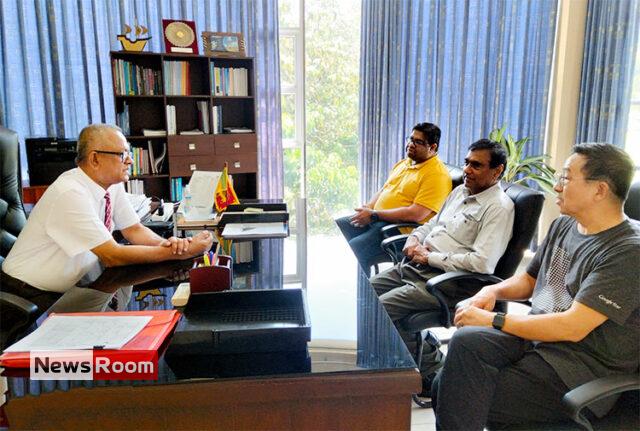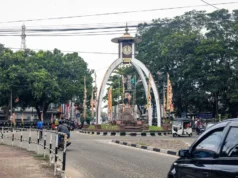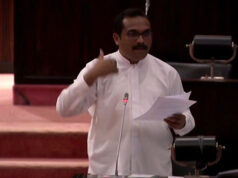Sri Lanka became the very first country (outside the USA) to deploy Georgia State University’s (GSU) Cosmic Ray Muon Detector. Sri Lanka now becomes GSU’s first international member as a part of its ongoing deployment plan for a global muon detector network and hosts a detector each at two strategic locations – Badulla, hosted at the University of Uva Wellassa campus, and Colombo, hosted at the University of Colombo campus, according to a press release issued by Prof. Unil Perera of GSU.
These two detectors have started logging data since end of March, and the data is being shared between the campuses and communicated to a central repository, managed by the GSU team in Atlanta, Georgia. The data from the detectors consists of raw muon counts (flux) sampled at one-minute intervals, which will be comprehended with meteorological data from open data sources and meteorology department collaborations. These datasets, along with the datasets generated by the entire network of muon detectors that have been deployed and those that will be deployed in near and far future, will be made available for free access to promote climate and other inter-disciplinary research across the globe.
Cosmic rays are high energy particles moving through space at nearly the speed of light and are one of the few direct samples of matter from outside our solar system. Most cosmic rays are protons (i.e., ionized hydrogen nuclei) with galactic origins. Other cosmic ray particles include gamma rays, electrons, neutrinos, and heavier elements. Protons could be deflected by magnetic fields making it hard to determine their origin.
Discovered in 1912, many things about cosmic rays remain a mystery more than a century later. Cosmic ray radiation has been blamed for causing electronics problems in satellites and other machinery. Earth’s magnetic field and atmosphere shield the planet from 99.9 percent of the radiation from space. However, for people outside the protection of Earth’s magnetic field, space radiation becomes a serious hazard. A previous Mars rover mission during its 253-day cruise revealed that the radiation dose received by an astronaut on even the shortest Earth-Mars round trip is equivalent to receiving a whole-body CT scan every five or six days.
This cosmic ray detector network deployment in Sri Lanka was spearheaded by GSU and led by computer scientist and engineer Dr. Ashwin Ashok (Associate Professor, Computer Scientist), nuclear/particle physicist Dr. Xiaochun He (Regents’ Professor, Physics and Astronomy), and device and biomedical physicist A. G. Unil Perera (Regents’ Professor, Physics and Astronomy). The team visited Sri Lanka to set up two cosmic ray muon detectors at the Faculty of Applied Sciences, Uva Wellassa University (UWU) in Badulla, and the Department of Physics at the Faculty of Science at the University of Colombo (UOC). Professor Jagath Pitawala and Dr. Rasanga Samaraweera (a former GSU graduate) will lead the project at UWU. Prof. Upul Sonnadara, Dr. Kithsiri Jayananda, and Mr. Deshitha Wickramarathna will be the lead team working at UOC on the project. The cost of the detectors, associated electronics and travel costs were borne by GSU, with an agreed official memorandum of understanding (MoU) and a material transfer agreement (MTA). The participants (including the researchers) will have access to the worldwide data and will be equal partners of the network of scientists studying the effects of the variation of muon flux with exogenous parameters such as elevation, time of the year and ambient temperature and pressure.
At present GSU has five cosmic ray detectors installed in the USA, three in Atlanta at the GSU main campus, another at Mount Wilson, California (GSU Chara Array cite) and at the Hard Labor Creek Park Observatory, (another GSU observatory in Rutledge, GA). In addition to the two detectors in Sri Lanka, the next stage of international installations is planned for a subset of countries in Asia and Europe. The main goal of the project at the near-term is to install more detectors at collaborating institutions worldwide and to study the variations of cosmic ray muon flux which are associated with the regional weather patterns and with the changes in space weather. The long-term goal is to install detector(s) in every country in the world and to use the network for several interdisciplinary studies which include space and terrestrial weather monitoring, public health (related to cosmic ray radiation), and other practical applications based on cosmic ray particle studies.
GSU is a “research one-R1” public University in the USA (recognized as one of the most research-intensive institutions by the Carnegie Classifications with at least 20 research or scholarship-based doctoral degrees and spend at least $5 million on research each year) and the nation’s second most innovative university in the US (US News and World Report) with more than 250 different majors and 35 different PhD programmes, has a fruitful connection with Sri Lanka. GSU has graduated more than 30 Sri Lankan students with Physics doctorates in addition to several doctorates in Computer Science, Biology, Chemistry, etc. Several of those GSU doctorates, particularly from Physics, are working as productive faculty members at several Sri Lankan universities and other reputed research laboratories around the globe.
Professor Unil Perera, a UOC alumni, who was also the graduate Director of Physics at GSU from 1995-2012, had established several joint programmes GSU, IIT Chennai and IFS, Hanthana and with UOC. GSU proudly and cordially welcomes this research collaboration and hopes to pursue these ties for a long term and further the cordial USA-Sri Lanka relationship.








